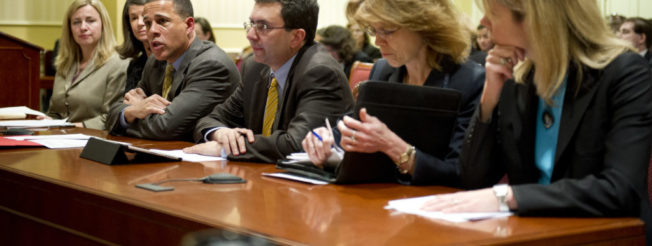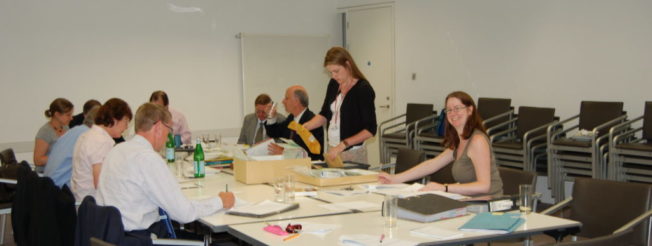There are a number of steps required to implement the climate change mitigation measures recommended in the Roadmap. Scroll through the implementation actions below to learn more!

Municipalities should include sustainability goals in their comprehensive plans in order to emphasize the importance of the required measures and to guide the development of new local regulations.
IM1. Add actions to comprehensive plan
- Include sustainability goals in comprehensive plan
- Emphasize importance of required measures
- Guide development of new local regulations
IM2. Require actions through regulation
- Supplemental building code
- Supplemental energy code
- Zoning laws and other municipal regulations
- Municipal home rules/police powers

Supplemental Building Code
Building codes can be the most effective form of requiring some of the measures, such as prohibiting fossil fuel hookups to buildings.
Section 11-109 of the New York State law states that municipalities can adopt local building codes if they are more restrictive than state code and municipalities have “special conditions”.6 This allows municipalities to adopt the supplemental New York Stretch Building Code that layers over the standard state building code.
However, it can be difficult in practice to get New York State to approve a locally-written supplemental building code. The Town of Bedford, NY lawyer said that: “obtaining approval through the Code Council Petition process is difficult, a large majority of applications get denied because the code provisions do not meet the “Special Conditions” standard, which requires that the Town show its need for such provisions. We also need to meet the best engineering practices standard.”7It may help if multiple municipalities apply for the same supplemental building code simultaneously.
Municipalities can attempt to work around this difficulty, such as by
- Encouraging a change in the state building code through the Climate Leadership and Community Protection Act process.
- Banding together to approach the New York State Code Council as a group.
- Encouraging state law makers to revise the requirements
Supplemental Energy Code
Municipalities are able to supplement the state energy code if the supplement is more stringent. For example, municipalities can adopt the New York Stretch Energy Code and can also create a municipal supplement too, such as Ithaca is doing.8
The downside to this route is that the energy code cannot interfere with the building code. (e.g. The energy code can’t prohibit fossil fuel hookups to a building.) However, it can require that certain efficiency standards be met or that a certain number of efficiency “points” be achieved if a builder has the choice of how to meet those requirements.
Zoning Laws and Other Municipal Regulations
Zoning laws and other municipal regulations can be used to enforce some of the recommended actions above, such as “EL8. Prohibit new or expanded fossil fuel dispensing.”
Municipal Home Rules/Police Powers
In New York, municipalities have the power to amend local law for the purpose of the protection of the safety, health, and well-being of its residents.9 This has been used, for example, to regulate clean water. The Town of Bedford, NY is leading an effort to explore requiring all buildings to be high performance based on the harm from climate change threats, pollution, lack of economic development, poor indoor health, and poor affordability. Bedford is also seeking state financial support in the same vein that the state supports clean water improvements for safety.10

Municipalities can reduce building permit fees and/or taxes on buildings that comply with recommended measures.
IM3. Encourage measures through financial incentives
- Reduce permit fees
- Reduce taxes
IM4. Hire and train municipal staff
- Training
- Sustainability staff
- Departmental naming

Training
If building department staff must review whether a building permit application meets certain sustainability requirements, then the staff must receive training on how to determine compliance.
Sustainability Staff
Municipalities should hire part- or full-time staff dedicated to coordinating sustainability measures.
Departmental Naming
In order to demonstrate the municipality’s dedication to mitigating climate change, the word “sustainability” should be included in the name of the appropriate department. For example, the planning department can be renamed Planning and Sustainability.

Municipalities should form a committee either focused on climate change mitigation, or on sustainability in general. This committee should comprise officials, professional staff, and resident volunteers. The duties of the committee may include:
- Reviewing and updating local climate change mitigation measures.
- Coordinating climate change mitigation measure implementation.
- Seeking funding for climate change mitigation measures and certifications.
- Encouraging or overseeing related services to residents and businesses.
IM5. Convene municipal sustainability committee
- Form a committee
- Review/update mitigation measures
- Coordinate implementation
- Seek funding
- Encourage participation
IM6. Cooperate with other regional municipalities
- Participate in regional sustainability meetings.
- Share lessons learned and insight into local challenges.
- Collaborate on regional projects and efforts.
- Work together with peers who are pursuing similar roadmap initiatives.
- Reach out to regional organizations to align with their priorities.

Municipalities should coordinate climate change mitigation efforts in order to:
- Reduce duplication of effort.
- Leverage existing resources and initiatives.
- Collaborate on ideas, projects, and lessons learned.
- Speak with greater authority when approaching outside governments and organizations.
- Reduce incentives for developers to choose project locations based on municipal sustainability requirements.

Municipalities should educate local residents about required and encouraged climate change mitigation efforts. This will result in greater levels of action through normative social influence, reduced confusion, and increased knowledge of opportunities.
Outreach can be conducted through channels such as:
- Email and printed newsletters.
- Websites.
- Temporary displays, such as at local schools, libraries, and municipal buildings.
- Staffed tables, such as at farmers markets and other gatherings.
- Storefronts. Municipalities can set up more complex displays (such as of energy efficiency techniques and renewable energy generating equipment) in retail spaces. These can be rented store fronts or temporary installations in otherwise vacant storefronts.
IM7. Conduct education and outreach
- Educate local residents
- Increase levels of action
- Multiple channels to use
IM8. Encourage availability of professional services
- Provide services
- Find qualified professionals
- Train professionals
- Increase range of professional service

Some of the climate change mitigation actions identified in this roadmap require professional services, such as energy audits and energy efficiency contracting. Municipalities should ensure that qualified professionals are available to residents and businesses, such as through:
- Providing the services directly.
- Identifying qualified professionals.
- Training professionals to be qualified.
- Encouraging qualified professionals from outside the municipality to provide services locally. 67

Municipalities can lower the cost of renewable energy generation and energy efficiency upgrades by purchasing equipment (e.g. PV panels and inverters) and materials (e.g. insulation) in bulk and then selling it at-cost to residents. Designated contractors would be allowed to pick up and install materials on behalf of a resident.
IM9. Purchase materials and equipment in bulk and resell to residents
- Lower renewable energy cost
- Lower efficiency upgrade cost
IM10. GHG Inventory, Benchmarking, and Accountability
- Conduct municipal GHG emissions inventory.
- Compare to similar and regional municipalities, by category.
- Publish the results in detail online.
- Track progress toward reducing overall emission.

By conducting an inventory of community-wide greenhouse gas (GHG) emissions, municipalities can build a common understanding of the major local emissions sources and prioritize actions within their jurisdiction. Once the initial inventory is created, the data serves as both a baseline for tracking progress and also provides insight into relative challenges and opportunities when benchmarked to other municipalities. For example, some communities may have larger commercial/industrial activity that is driving emissions, while others may have a majority of transportation-related emissions.
See the resources section below for guidance on getting started!
Resources
A great place to start for Capital District communities is the 2010 GHG inventory that was prepared by the CDRPC (see link below) where you can find your specific data with breakdowns by category.
https://climatesmart.ny.gov/support/regional-greenhouse-gas-inventories-in-nys/
Additional resources for conducting GHG inventories and benchmarking:
NY-Based
https://climatesmart.ny.gov/fileadmin/csc/documents/GHG_Inventories/ghgguide.pdf
https://climatesmart.ny.gov/support/regional-greenhouse-gas-inventories-in-nys/
https://www.nyserda.ny.gov/All-Programs/Programs/Clean-Energy-Communities/How-It-Works/Toolkits/Benchmarking
National and international
https://resourcecentre.c40.org/resources/reporting-ghg-emissions-inventories
https://www.epa.gov/statelocalenergy/local-greenhouse-gas-inventory-tool
https://rmi.org/benchmarking-data-can-help-cities-meet-climate-goals/
https://www.energy.ca.gov/programs-and-topics/programs/building-energy-benchmarking-program/local-government-benchmarking
https://ghgprotocol.org/greenhouse-gas-protocol-accounting-reporting-standard-cities
https://www.c40knowledgehub.org/s/article/The-Global-Protocol-for-Community-Scale-Greenhouse-Gas-Emission-Inventories-GPC?language=en_US
https://icleiusa.org/clearpath/ (Membership to ICLEI required)